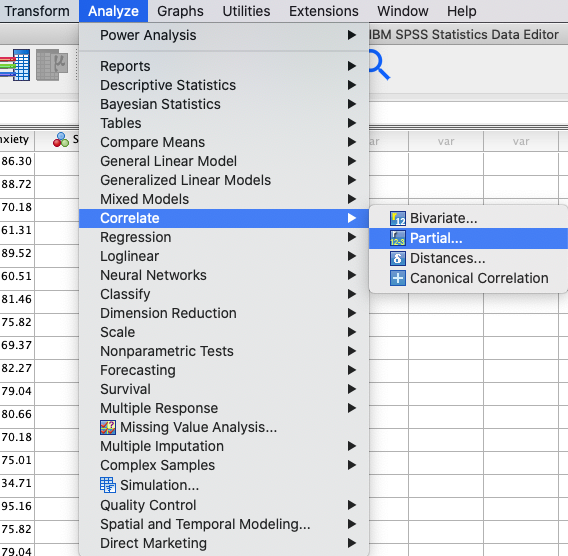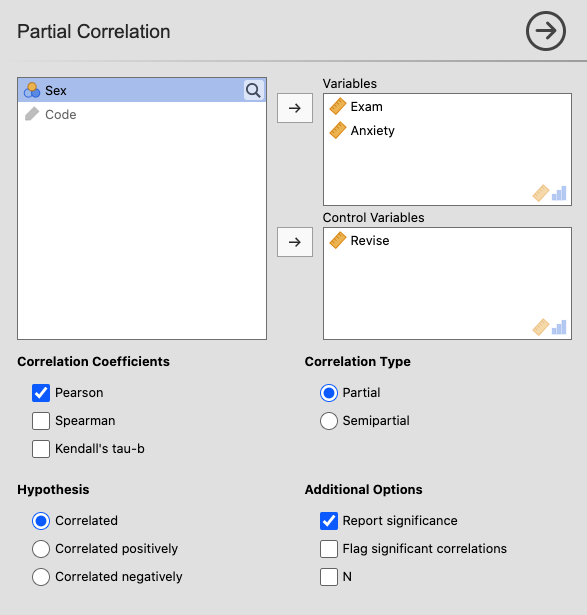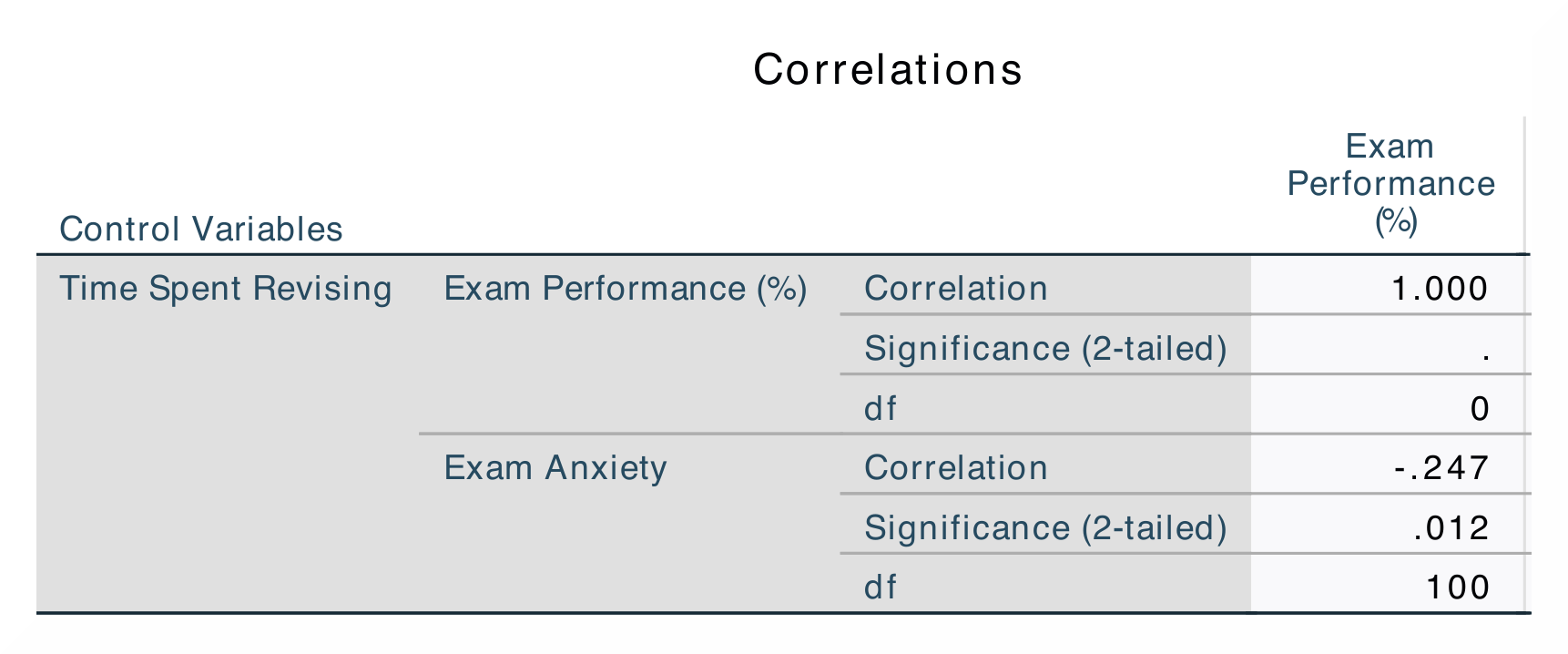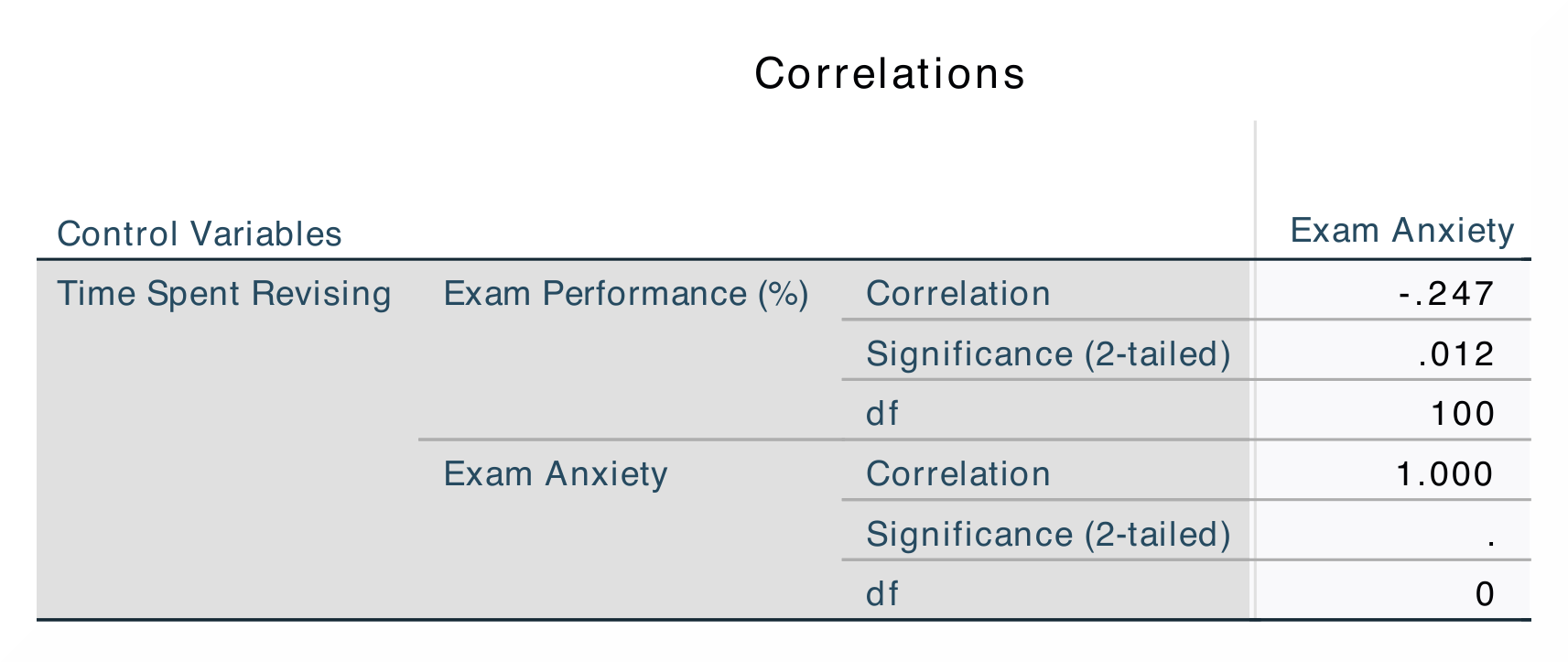节作者:Rebecca Vederhus, Sebastian Jentschke
From SPSS to jamovi: Correlation¶
This comparison shows how a semi-partial (or partial) correlation is conducted in SPSS and jamovi. The SPSS test follows the description in chapter 8.5.3 in Field (2017), especially figure 8.11 and output 8.5. It uses the data set Exam Anxiety.sav which can be downloaded from the web page accompanying the book.
| SPSS | jamovi |
|---|---|
In SPSS you can run a partial correlation using: Analyze → Correlate
→ Partial. |
In jamovi you do this using: Analyses → Regression → Partial
Correlation. |
 |
 |
In SPSS, move the variables Exam `` and ``Anxiety to the variable box
Variables, and Revise into the box called Controlling for. |
In jamovi, move the variables Exam and Anxiety into the Variables
box and Revise into the variable box Control Variables. Tick
Pearson under Correlation Coefficients``and ``Report significance
under Additional Options. |
 |
 |
| The results are the same in SPSS and in jamovi. | |
 |
 |
 |
|
| In SPSS, you can tell if a correlation is significant by noting the amount of asterisks after the correlation coefficient. The correlation matrix shows the correlation coefficient, the p-value, and the sample size (N). | In jamovi, significant correlations are flagged using one (p < .05), two (p < .01) or three (p < .001) asterisks. This differs from SPSS, where all correlation above p < .01 level is simply marked using two instead of three asterisks. |
| Results are presented twice in SPSS, while in jamovi they are only presented once. The numerical values for the statistics are identical: r = -.25. | |
| If you wish to replicate those analyses using syntax, you can use the commands below (in jamovi, just copy to code below to Rj). Alternatively, you can download the SPSS output files and the jamovi files with the analyses from below the syntax. | |
PARTIAL CORR
/VARIABLES=Exam Anxiety BY Revise
/SIGNIFICANCE=TWOTAIL
/MISSING=LISTWISE.
|
jmv::corrPart(
data = data,
vars = vars(Exam, Anxiety),
controls = Revise)
|
| SPSS output file containing the analyses | jamovi file containing the analyses |
References
Field, A. (2017). Discovering statistics using IBM SPSS statistics (5th ed.). SAGE Publications. https://edge.sagepub.com/field5e